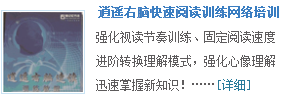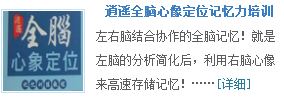tips:iPS细胞是往体细胞中转入若干基因,使体细胞逆向回到胚胎干细胞样状态,具有多向分化潜能,如可分化成心肌细胞、成骨细胞等,在医学上可用患者的自体细胞制成iPS细胞进行机体损伤的组织修复,避免了免疫排斥反应和胚胎干细胞涉及的伦理问题,但目前研究的缺点是可能致瘤。
对体细胞(构成大部分身体组织的“普通”细胞)进行重排、使其成为诱导产生的多能干细胞(iPS细胞)的过程,涉及四个转录因子的表达??Oct4、Sox2、 c-Myc和Klf4。为了使这个程序在临床应用中更简单、更安全,以减少所需转基因数量、免除对致癌基因c-Myc之需要为目的的工作正在进行当中。现在,Kim等人发现,仅仅两个内生因子(Oct4 加上Klf4或c-Myc),就足以从成年小鼠神经干细胞生成iPS细胞。之所以有可能这样,是因为这些神经细胞比胚胎干细胞表达更高水平的内生Sox2 和 c-Myc,这说明具有适当匹配的转录因子的体细胞是生成iPS细胞的一个潜在有用的起始点。
原始出处:
Nature 454, 646-650 (24 July 2008) | doidoi:10.1038/nature07061
Pluripotent stem cells induced from adult neural stem cells by reprogramming with two factorsJeong Beom Kim1,3, Holm Zaehres1,3, Guangming Wu1, Luca Gentile1, Kinarm Ko1, Vittorio Sebastiano1, Marcos J. Araúzo-Bravo1, David Ruau2, Dong Wook Han1, Martin Zenke2 & Hans R. Schöler1
Department of Cell and Developmental Biology, Max Planck Institute for Molecular Biomedicine, R?ntgenstrasse 20, 48149 Münster, NRW, Germany
Institute for Biomedical Engineering, Department of Cell Biology, RWTH Aachen University Medical School, Pauwelsstrasse 30, 52074 Aachen, NRW, Germany
These authors contributed equally to this work.
Correspondence to: Hans R. Schöler1 Correspondence and requests for materials should be addressed to H.R.S. (Email:schoeler@mpi-muenster.mpg.de).
Reprogramming of somatic cells is a valuable tool to understand the mechanisms of regaining pluripotency and further opens up the possibility of generating patient-specific pluripotent stem cells. Reprogramming of mouse and human somatic cells into pluripotent stem cells, designated as induced pluripotent stem (iPS) cells, has been possible with the expression of the transcription factor quartet Oct4 (also known as Pou5f1), Sox2, c-Myc and Klf4 (refs 1?11). Considering that ectopic expression of c-Myc causes tumorigenicity in offspring2 and that retroviruses themselves can cause insertional mutagenesis, the generation of iPS cells with a minimal number of factors may hasten the clinical application of this approach. Here we show that adult mouse neural stem cells express higher endogenous levels of Sox2 and c-Myc than embryonic stem cells, and that exogenous Oct4 together with either Klf4 or c-Myc is sufficient to generate iPS cells from neural stem cells. These two-factor iPS cells are similar to embryonic stem cells at the molecular level, contribute to development of the germ line, and form chimaeras. We propose that, in inducing pluripotency, the number of reprogramming factors can be reduced when using somatic cells that endogenously express appropriate levels of complementing factors.
本文来自:逍遥右脑记忆 http://www.jiyifa.com/gaozhong/488264.html
相关阅读:研究人员发现一种痴呆相关基因



